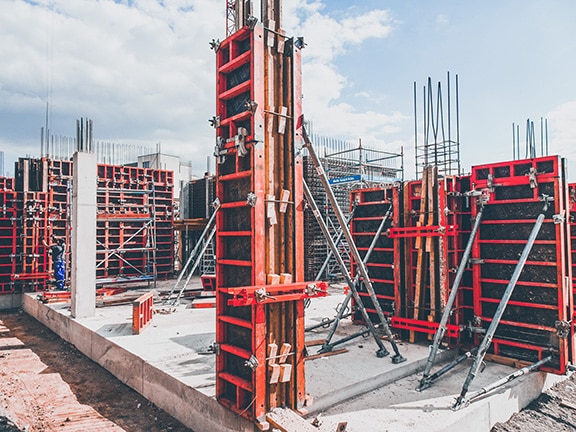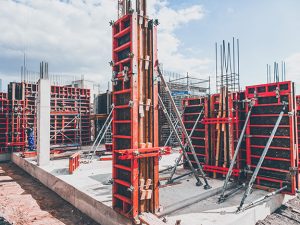Concrete contractors are among the most in-demand stakeholders in any construction project. This is because concrete remains to be a popular material used in building structures, thanks to its versatility and sustainability. But the process of concreting isn’t always easy. There are challenges that concrete contractors meet and those are what we are going to discuss here today.
Concrete is a relatively easy material to manage. However and like all building materials, concrete degrades over time, but there are ways to slow wear and fix damages.
Concrete problems vary but could include discolorations, shrinkage, scaling, and various other problems. Responding at the first sign of a problem is key, so you should perform routine inspections. This is where concrete contractors come in.
The following information covers common concrete problems and the solutions that can preserve your structure’s appearance and stability.
Common Concreting Problems
Cracks
Cracks in concrete tend to start at the surface and work their way to the bottom of the slab over the course of several months. If you allow the cracks to reach through to the subgrade, you will need to fully replace the concrete structure to restore its strength and appearance.
Small cracks can be easily fixed by cleaning loose material out of the damaged areas and filling the spaces with concrete filler. Applying a sealant product after the patch cures will help strengthen the repaired area.
Crazing
A network of tiny cracks in the surface of the concrete is referred to as crazing. Crazing often occurs due to improper mixing or curing during the installation process. Although these cracks do not extend down far enough to impact the structural stability of the concrete, the fine lines may reduce the aesthetic value of your property.
Concrete contractors usually prevent crazing through a quality installation process, but it may be possible to cover up this type of damage if you cannot proactively avoid it. If the crazing occurs on a decorative indoor concrete structure, you may be able to apply a layer of epoxy paint to cover up the unsightly cracks.
Unfortunately, sealers and surface hardeners can make the cracks more noticeable, so a layer of resurfacing concrete is often the only option for concealing crazing on outdoor structures.
Discoloration
Light or dark patches on concrete can result from improper installation techniques or stains from materials such as automobile fluids and cleaning chemicals. It is essential to address this damage as soon as you notice it to keep the discoloration from spreading across the entire slab of concrete.
Discolored concrete is usually scrubbed with a stiff brush dipped in a diluted vinegar solution to restore its appearance and halt the progression of this problem. Stronger chemicals, such as hydrochloric acid or diammonium citrate, may be needed to resolve severe cases of discoloration. Because these solutions can make problems worse if applied incorrectly, it is a good idea to consult a concrete expert before using them.
Scaling
Those who use de-icing salts on concrete during winter months often observe the surface to start to show signs of scaling. The loss of surface material will usually continue until you repair the damaged areas. The solution for this problem is a new layer of resurfacing concrete, which will require concrete contractors to rough up the entire surface of the concrete structure to prepare it for the repair process. After they have applied the new layer of concrete and allowed the material to cure overnight, concrete contractors apply a waterproof finishing treatment to protect it further.
Buckling
If there are large trees around the concrete property, the roots may grow under the structure, causing the slab to buckle and split apart. Extreme freeze-thaw cycles and heat exposure can also cause the material to buckle. The only way to repair this type of damage is to remove the damaged portion of the concrete, along with any roots that may have caused the problem. Concrete contractors can then install a large patch to prevent the buckled area from causing adjacent structures to crack and split as well.
Curling
Concrete curling occurs when there is a difference in both temperature and moisture of the top and bottom surface. When curling occurs, the slab of the surface becomes unsupported from the base. To avoid curling, concrete contractors should use proper curling techniques. They place concrete joints accordingly and use low water content or use water-reducing admixtures with the largest possible aggregate size. Concrete contractors ensure proper bonding when applying thin topping mixes. They use enough, not excessive, amounts of steel reinforcement in the slab. Finally, they place concrete on a damp but absorptive sub-grade so that all the bleed water is not forced to the top of the slab.
Final Words
Watch out for these concrete problems as they can decrease the value and strength of the structure. Work on multiple concrete repairs much easier when you have a reliable concrete contractor software like Pro Crew Schedule.






1 thought on “6 Most Common Concrete Problems and Fixes”
Thanks for making a list of the common concrete problems and how to fix them. I am thinking that my driveway needs a repair due to some cracks I found earlier. I had no idea that if not fixed, it will decrease the value and strength of the structure.